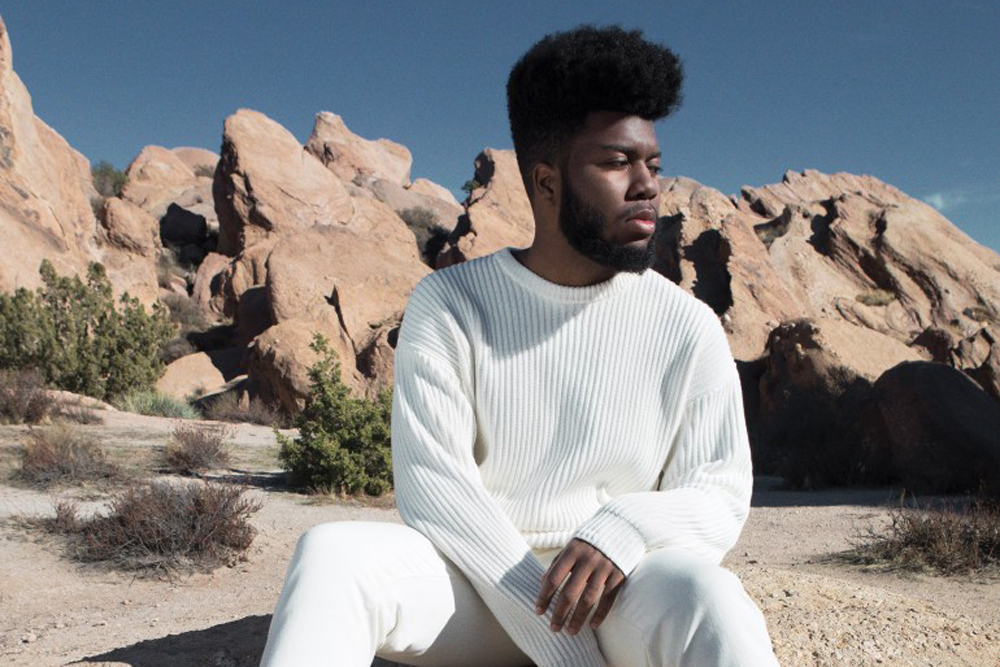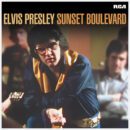Australian artist Vance Joy is blowing up both online and off. To date, he’s earned more than a billion (yes, billion with a “b.” That’s a thousand millions) online listens, and early into his North American headlining tour, all of his dates are sold out. The video for his 2013 hit single “Riptide” alone has amassed nearly 200 million views.
It is hard to imagine a better career path for an artist on the rise. In 2013, Joy (birth name: James Gabriel Keogh) signed a five-album deal with Atlantic Records and in 2015 he toured as the opening act for Taylor Swift. On the day Music Connection sat down with the artist, Jimmy Kimmel Live! was on his afternoon schedule and his evening plans included a sold-out performance at Hollywood’s Fonda Theatre.
First Steps
Joy took his first steps into music as a teenager in Melbourne when he picked up a guitar. He began with parodies of popular songs for his friends. But when he expanded into writing his own lyrics, his confidence and competence blossomed and he soon waved goodbye to parodies.
After high school, he and some friends put a band together and took whatever gigs they could get. There was something of a hiatus while he completed his degree in English and law at Melbourne’s Monash University. Upon graduation, not only did he emerge with a degree in hand, but also a cluster of songs in his pocket that he felt were worthy of an audience. In his words, “This isn’t going to be wasting someone’s time to listen to this three minutes of [a] song.”
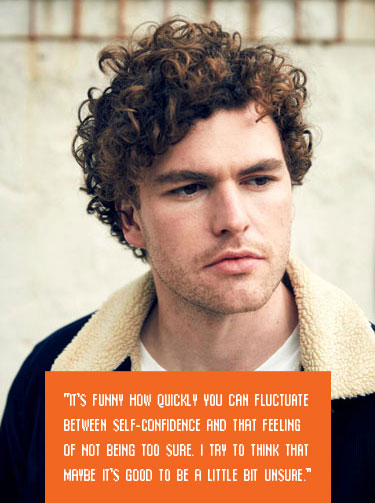 The first tune Joy wrote that signaled he was on the right path was “Winds of Change.” That was in 2009 when the singer was nearly 22 and about to depart on a backpacking trip. Indeed, it’s the kick-off song on his first album: 2014’s Dream Your Life Away. That’s when he realized he was on to something—that songwriting and performing were no longer simply things he did for fun. They were his job. So he stepped into Melbourne’s Red Door Sounds and had his songs recorded professionally. “From then on, I was able to find my way into the industry,” he explains. Dream Your Life Away peaked at No. 1 on the Australian Albums Chart and Atlantic dropped it stateside mere days after its release down under.
The first tune Joy wrote that signaled he was on the right path was “Winds of Change.” That was in 2009 when the singer was nearly 22 and about to depart on a backpacking trip. Indeed, it’s the kick-off song on his first album: 2014’s Dream Your Life Away. That’s when he realized he was on to something—that songwriting and performing were no longer simply things he did for fun. They were his job. So he stepped into Melbourne’s Red Door Sounds and had his songs recorded professionally. “From then on, I was able to find my way into the industry,” he explains. Dream Your Life Away peaked at No. 1 on the Australian Albums Chart and Atlantic dropped it stateside mere days after its release down under.
Paying His Dues
But of course success demands more than the simple recording and submission of a few songs. Indeed, Joy’s first bona fide hit, “Riptide,” remained several years in the future. In 2010 he still had dues to pay, so he began to hit various open mics in and around Melbourne. He started locally at a bar called The Great Britain. He put his name on a list at 5:00 which usually landed him a 7:30 performance spot. At the time, he only had two original songs and needed one more for his set. Fortunately, the pressure of an upcoming gig triggered his creativity and he penned a third.
As momentum increased, Joy widened his circle and began to call around to other venues. He was told he could perform, but he’d need another two bands to fill out the bill. He tapped a pair of like-minded friends and the roster was complete.
Vance Joy’s first “proper gig,” as he calls it, was in October 2012 at The Workers Club, a 200-seat capacity venue located in central Melbourne. He booked the gig six months out, which left him breathing room to form a band and get six solid originals nailed by show time.
Before the gig, he uploaded his songs––notably “Riptide”––to SoundCloud, which he linked to his Facebook page. He checked the number of listens constantly for the first week. By the time he’d earned 100 likes, he had the reassurance he needed. Once his Workers Club date rolled around, people were familiar with the song. “Without that,” he observes, “I wouldn’t have been able to get people in that room.”
Key Connections
After he recorded “Riptide” and several other songs in 2012, Joy reached out to Jaddan Comerford, someone he’d known at school who’d developed connections at Atlantic Records after graduation. Those connections proved pivotal. “A month and a half after I’d recorded the songs, Jaddan asked, ‘You want to go to New York to play for Craig Kallman, the Chairman and CEO of Atlantic Records?’” Joy recalls. “I wanted to do it, but was super-scared. That was a crazy opportunity and like nothing I expected. Those three days in New York before I met with him, I was super-nervous. I don’t think I’ve been that nervous for anything before that. But when he came into the room, he had these beautiful blue eyes and was very calm. That helped me feel that it was all good.” Soon thereafter, a deal was offered and Joy signed it after his repatriation to Melbourne.
Certainly social media has played a crucial role in his success. No modern artist can afford to ignore it, dual-edged sword or not. “That number of cumulative streams is very cool,” Joy observes of his billion-plus online listens. “My manager mentioned that I was lucky to be an artist who embarked in music at the time when Spotify and several other streaming services were just taking off. All those huge bands from [back in] the day might not have had that same kind of clear statistic. I’m not a super hands-on social [media] guy. I use my Instagram to look at people, to look at friends. I post every few days, but it’s not a diary. It’s more maybe a photo from a show. But I like it because it gives you the ability to show your personality. As a human being, you want to know––if you have a CD or a book out––if people like it. That’s a natural impulse, to crave that pat on the back. But it can’t dictate your core happiness. It’s nice to see [your work] connecting with people.”
The Producer/Artist Relationship
Recently Joy’s collaborated with several prolific producers, notably Phil Ek (Mudhoney and The Shins) as well as Ryan Hadlock (The Lumineers), who was a producer on Joy’s 2014 record Dream Your Life Away. He came to work with him by way of his Atlantic A&R rep. “I had a song that was kind of half written called ‘Mess is Mine,’” Joy recalls. “All I had was a verse and chorus; it wasn’t fully worked out.”
But Stefan Max [Joy’s A&R rep] liked what he heard and wanted to get it done. “I wasn’t sure that it was ready,” Joy recalls. “I had a trial week with Ryan in Seattle. I played him the minute of the song that I had. He made suggestions, like, ‘That sounds like the bridge, not the chorus.’ It was nice to have an objective opinion. We spent the next four months honing it. He chopped it up a bit and we tried it in different ways, moved parts around and eventually came up with a song that worked. I’ll always feel indebted to him for that. He’s a really cool, creative guy. He added a piano riff for the song ‘Wasted Time,’ which I loved. It took the song to a different level.”
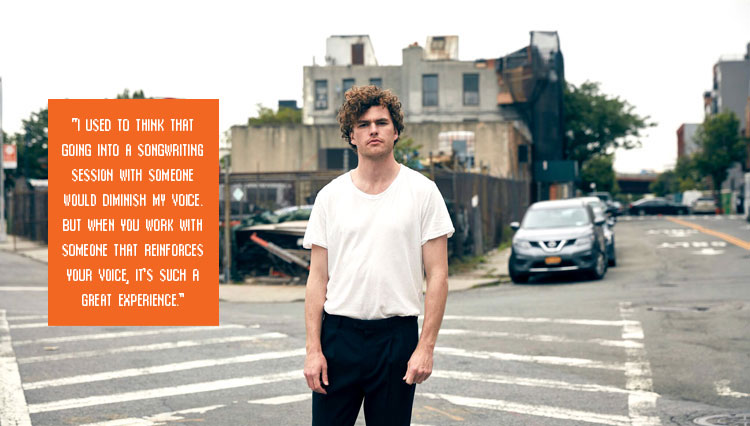 When Music Connection interviewed Hadlock back in 2013 for the Producer Crosstalk column, he expressed the idea that every opinion is a valid one and that some of the best things happen by having an open relationship. Joy has come to appreciate this production philosophy. “It’s a nice approach and I agree with it,” he concedes. “Hear everyone out––you don’t know all the answers and the ultimate goal is to make [a song] as awesome as possible. Everyone can throw their ideas on the wall and see what sticks. When one is out in its full form, we can appraise it later once we’ve tried everything. Let [each person] get their idea out and maybe by the time it comes into its full expression, it’s actually awesome.”
When Music Connection interviewed Hadlock back in 2013 for the Producer Crosstalk column, he expressed the idea that every opinion is a valid one and that some of the best things happen by having an open relationship. Joy has come to appreciate this production philosophy. “It’s a nice approach and I agree with it,” he concedes. “Hear everyone out––you don’t know all the answers and the ultimate goal is to make [a song] as awesome as possible. Everyone can throw their ideas on the wall and see what sticks. When one is out in its full form, we can appraise it later once we’ve tried everything. Let [each person] get their idea out and maybe by the time it comes into its full expression, it’s actually awesome.”
When Joy works with a producer, it is commonly for what he calls a “trial week.” The week-long session typically results in two strong songs. “I’ve been lucky to work with great producers,” he says. “It’s less of a trial and more of ‘Let’s record two songs, we’ve got one week.’ I’ve never gone to a trial and felt that it didn’t work and scrapped the songs. I’ve always walked away with ones that I’ve felt good about.”
The Joy of Collaboration
As he has grown into the role of successful singer-songwriter, Joy says he has learned the value of collaboration, particularly with producers who aid him with lyrics and song structure. “I used to think that going into a songwriting session with someone would diminish my voice,” the singer explains. “When you work with someone that reinforces your voice, it’s such a great experience. When that’s happened with me, [I thought] ‘These are songs I wouldn’t have been able to do alone.’ That’s been an interesting discovery.”
“Lay It On Me” came together when Joy was able to match a lyric he had on his phone––“Everything starts at your skin”––with a guitar riff he’d been noodling with for some time. But of course it was more complicated than it sounds. “It can be a long process turning that riff into a fully-fledged song,” he admits. “I tried writing songs for it for ages. There were three years of having it lying around, trying ideas and giving up on it.”
But then Joy went into a songwriting session at the start of this year with Dave Bassett [who co-wrote Elle King’s 2014 hit “Ex’s & Oh’s”]. “He’s a great songwriter and producer,” he enthuses. “We managed to use that riff and put it in a song that felt really right. I think I needed a different color; a little injection of ‘Hey, have you ever thought about this?’ He chucked me a melody for that riff and the song opened up. That’s evidence to me that you can write a song that feels totally you, but you can write it with someone you just met. That’s a cool thing.” [Read MC’s profile of Bassett at musicconnec tion.com/songwriter-profile-dave-basset.]
Overcoming Obstacles
Although Joy’s career is in its relative infancy, he’s managed to write a number of well-received songs. That, however, doesn’t mean that it’s been easy. As with any creative endeavor, sometimes insecurity can creep in like an uncredentialed backstage groupie. “That must happen with anyone who’s trying to mine themselves for creative ideas,” the singer suggests. “Whatever ingredients you’ve got, sometimes they fit together perfectly, you make something and you’re like ‘Wow.’ Other times, it’s just not working.
“I was on tour once with Bernard Fanning,” Joy continues, “and felt tapped out. I mentioned this to him and he said that they’re just obstacles. Everyone encounters them––patches where you’re not productive and your ideas aren’t sticking. But those obstacles can always be overcome. That was something that made me think, ‘I’ll just forge ahead.’ It’s funny how quickly you can fluctuate between self-confidence and that feeling of not being too sure. I try to think that maybe it’s good to be a little bit unsure.”
Metaphor Man
Like any songwriter who is blessed with depth of artistry, many of Joy’s lyrics are commonly metaphorical rather that literal. As mentioned earlier, his song “Lay It On Me” includes the phrase “Everything starts at your skin.” Are metaphorical lyrics something he strives for or are they simply inherent to his natural writing style?
“When I’ve written songs that are too literal, it doesn’t feel like me,” he notes. “I’m proud of the line, ‘Everything starts at your skin,’ but I stole it out of a book. But you can be great with specific details, which can be super-powerful as well. In the past when I’ve tried to get too specific, it didn’t always work. [Metaphorical lyrics] might be the kind I connect with. Without that lyric, the song wouldn’t have been as powerful.
Sometimes you can have an ordinary, everyday line that’s familiar and powerful as well, he adds. “For example, Ed Sheeran’s song ‘Thinking Out Loud.’ There’s something familiar and everyday about that which is also powerful: when you can capture an everyday expression, like, ‘For what it’s worth.’ That can still carry a lot of weight. It’s hard to know what will work unless you put the words in that space in the melody of the song. Everyday usage can turn into something powerful when it’s in the right environment.”
Variety––something that comes to him naturally––is also central to Joy’s songwriting. “We all have our styles and that’s what makes you who you are as a songwriter or creative person,” he observes. “You do that repeatedly and that becomes your style. I’m always open to trying new rhythms and to collaborate with people just to see if there’s a different way of singing or different melodies and rhythms with your words. I like exploring but I also feel like on the other side of that is this guy who has the same set of tricks and using those same ingredients and tricks comes up with variations and different songs. If you keep doing it, hopefully it keeps providing. That’s the goal, anyway.”
Under the Influence
In the early days of his career, Vance Joy was known for his cover of Green Day’s “Good Riddance (Time of Your Life).” In view of that, how influential have other artists been on him?
“There are so many amazing songs and when you listen to them, it’s hard to see yourself writing one that good,” he admits. “If I listen to a Peter Gabriel tune like ‘Solsbury Hill,’ I’m like, ‘That’s a song that’s, like, far out. Imagine writing that.’ That just inspires me to keep trying. There are a lot of godfathers and godmothers of incredible songs. They inspire all songwriters.”
While in Los Angeles, Joy appeared on Jimmy Kimmel Live! where he performed “Lay It On Me.” He loves playing for an audience that numbers in the millions, but it comes packaged with other challenges. “I enjoy the experience because it’s exciting,” he observes. “Everybody gets dressed up and hangs in the green room. There’s always some [other] famous person that’s on. That’s cool, just being in that environment. You’re a bit more conscious of your performance because there’s a camera. But there’s a little more pressure. Is my pack turned on? Is the battery going to run out? All that kind of stuff that goes through your head before you play. It’s just like any other performance but perhaps slightly heightened because you’re nervous. As long as you have a grip on your nerves and you’re in control, they can be useful.”
Not being native to this land, does he find American audiences to differ significantly from Australian ones? “It’s so variable,” the singer asserts. “You can put them all together and go state-by-state. A Melbourne audience versus a Chicago audience; a New York crowd versus a Brisbane one. You could say that a Melbourne audience is similar to a New York one; Chicago is like a Brisbane audience. They’re really enthusiastic.”
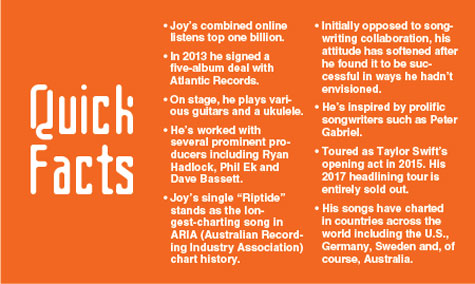 Last summer, Joy played Chicago’s Lollapalooza for the second time, giving him the opportunity to weigh indoor versus outdoor shows. “When the audience is as enthusiastic as that crowd and the vibe and energy are strong,” he says of Lolla, “that’s the best thing. That can also be recreated indoors. It really comes down to the atmosphere in the room and to you as a band—putting on a good show. That’s put people in the mood. It’s a bit of both. If the crowd is really receptive, you can feed off of each other’s energy. That’s the perfect atmosphere and condition for a great show. When it happens, you know it and you’re like ‘That was a good one, guys.’”
Last summer, Joy played Chicago’s Lollapalooza for the second time, giving him the opportunity to weigh indoor versus outdoor shows. “When the audience is as enthusiastic as that crowd and the vibe and energy are strong,” he says of Lolla, “that’s the best thing. That can also be recreated indoors. It really comes down to the atmosphere in the room and to you as a band—putting on a good show. That’s put people in the mood. It’s a bit of both. If the crowd is really receptive, you can feed off of each other’s energy. That’s the perfect atmosphere and condition for a great show. When it happens, you know it and you’re like ‘That was a good one, guys.’”
Looking Ahead
One can’t help but wonder what the future holds for this rising artist as he climbs fame’s ladder. “There’s a vague desire to keep making albums of quality,” Joy reveals. “Some records with some real meat about them. I’m living in the moment and enjoying being on tour; enjoying the ride. Every now and then I step outside of it and say ‘This is pretty awesome. I get to tour [and see] these lovely people. I get to meet fans and have good and positive experiences.’ It’s just living in the moment, keep on writing songs, following the instinct and seeing where it ends up.”
Shortly before he left for Kimmel, Joy confessed that he wasn’t especially nervous for that night’s sold-out show at Hollywood’s Fonda Theatre. “I seem relaxed now,” he jokes. “We’ve got friends in town. When you’re performing for friends, you want to put on a good show. That’ll give us a little pep in our step.”
Contact Ashley.White@atlanticrecords.com
Music Connection interviewed Vance Joy in October. To hear him talk further about key moments in his career, check out the Music Connection Magazine Podcast. See podcastone.com/music-connection. And be sure to rate & review us!


